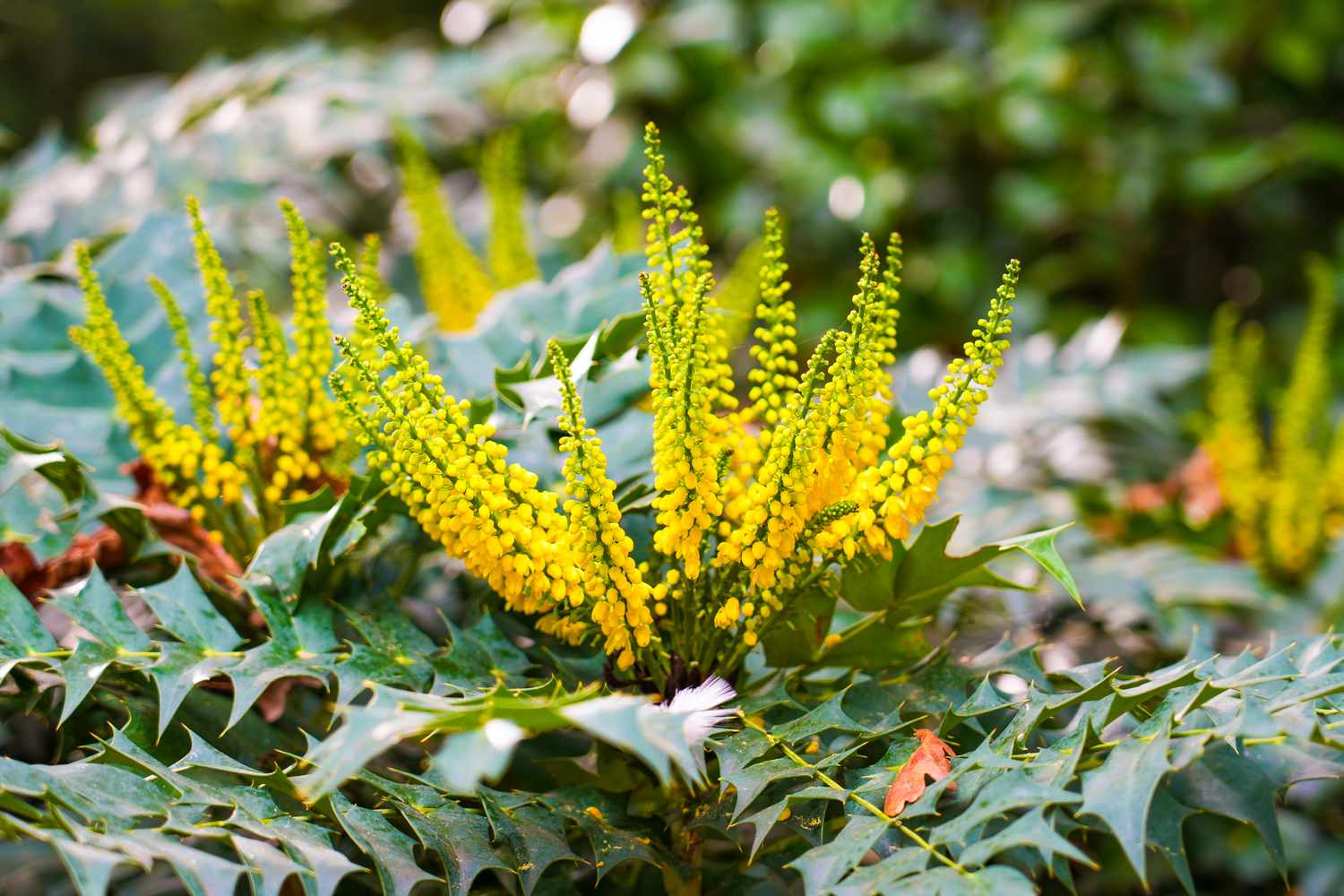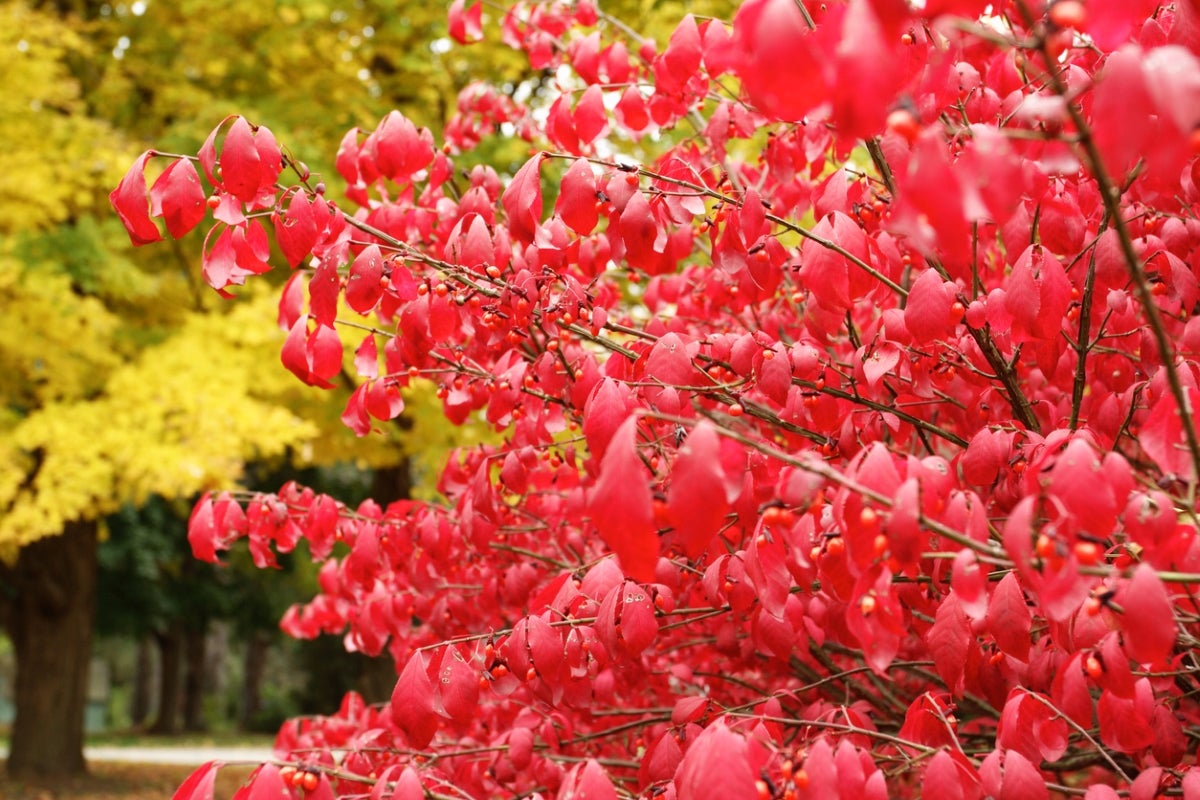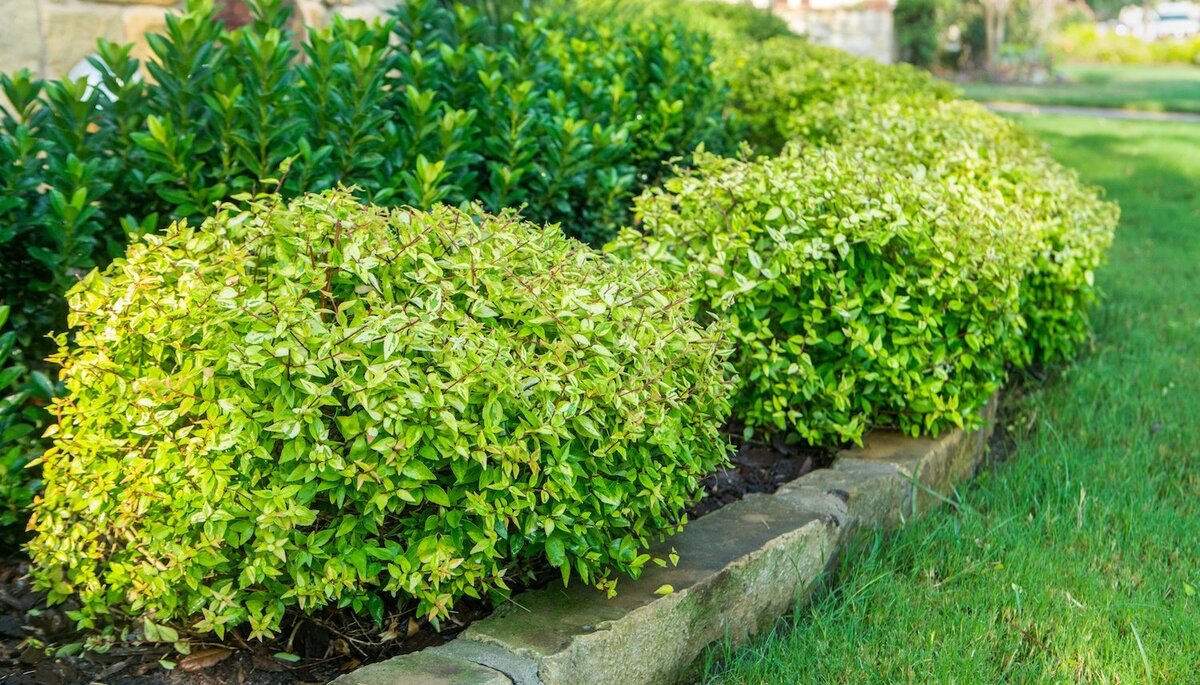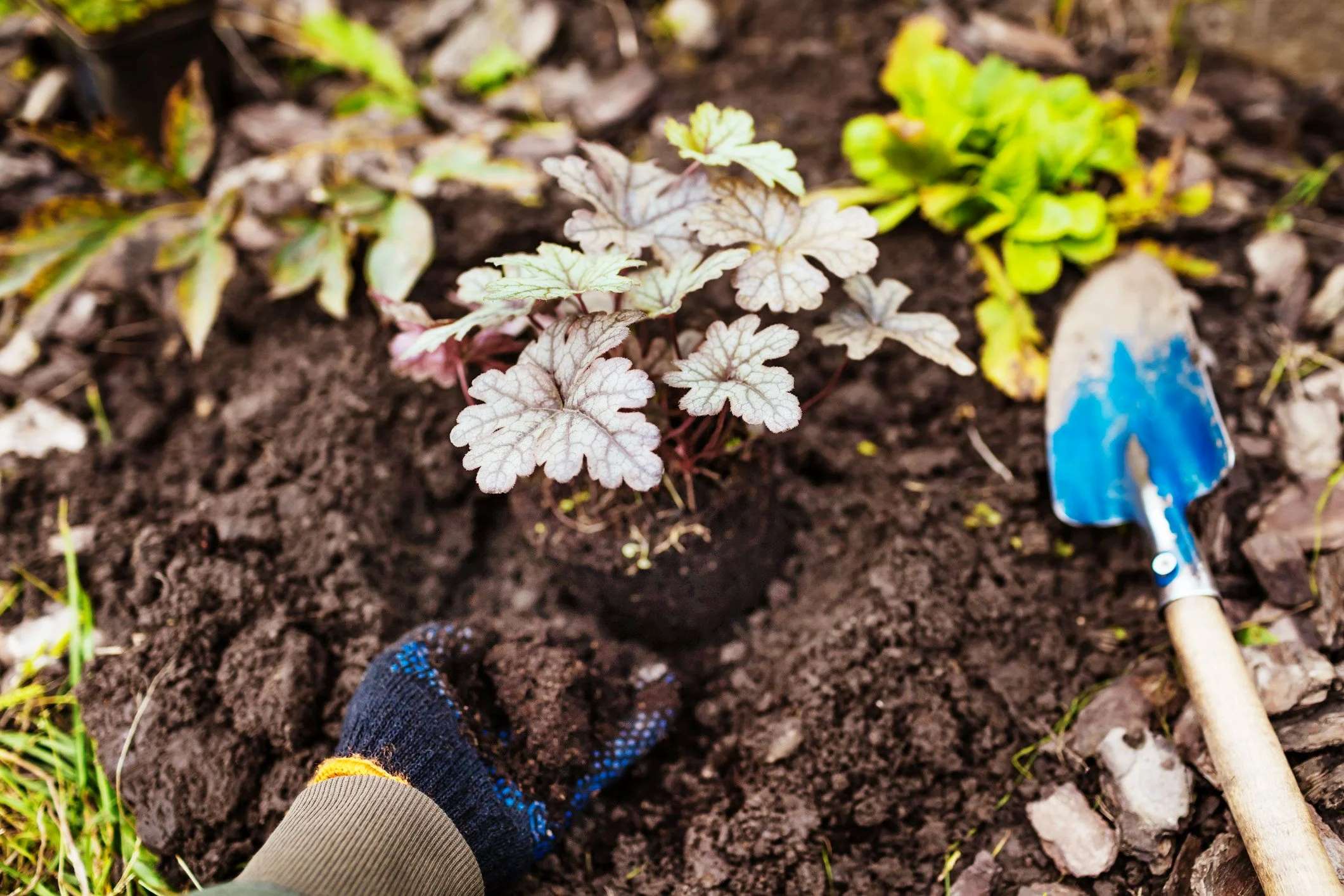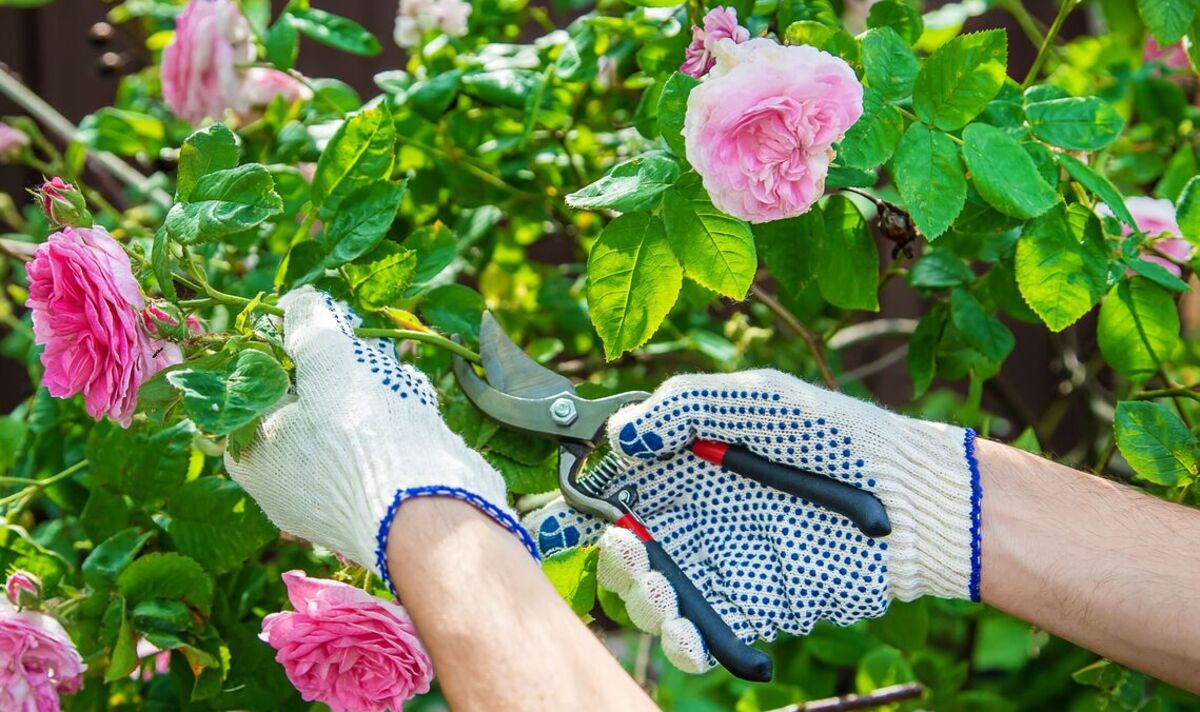Home>Gardening Techniques>Seasonal Gardening>When Can You Plant Evergreen Shrubs In Ohio


Seasonal Gardening
When Can You Plant Evergreen Shrubs In Ohio
Modified: January 22, 2024
Discover the best time to plant evergreen shrubs in Ohio with our seasonal gardening guide. Plan your landscaping projects effectively and enjoy year-round greenery in your garden.
(Many of the links in this article redirect to a specific reviewed product. Your purchase of these products through affiliate links helps to generate commission for Chicagolandgardening.com, at no extra cost. Learn more)
Table of Contents
- Introduction
- Understanding Evergreen Shrubs
- Climate and Hardiness Zones in Ohio
- Best Time to Plant Evergreen Shrubs in Ohio
- Preparing the Soil and Site
- Selecting and Purchasing Evergreen Shrubs
- Planting Techniques for Evergreen Shrubs
- Aftercare and Maintenance for Evergreen Shrubs
- Common Evergreen Shrubs for Ohio Gardens
- Conclusion
Introduction
Welcome to the world of seasonal gardening in Ohio! If you’re a proud Ohioan and passionate about gardening, you’re in for a treat. Ohio’s diverse climate and fertile soil create the perfect conditions for a wide variety of plants to thrive, including evergreen shrubs.
Evergreen shrubs are an essential addition to any garden, providing year-round color, texture, and structure. They are prized for their ability to retain their foliage throughout the year, creating a vibrant and lush landscape even in the depths of winter.
Whether you’re a beginner or a seasoned gardener, understanding the ideal time to plant evergreen shrubs in Ohio is crucial for their successful establishment and survival. In this article, we will delve into the climate and hardiness zones of Ohio, discover the best time to plant evergreen shrubs, explore the soil preparation process, discuss purchasing considerations, and learn essential planting techniques and aftercare tips.
So, if you’re ready to embark on an adventure of beautifying your garden with vibrant evergreen shrubs, let’s dive in and discover the wonders of the seasonal gardening world in Ohio!
Understanding Evergreen Shrubs
Before we delve into the particulars of planting evergreen shrubs in Ohio, let’s take a closer look at what exactly they are. Evergreen shrubs are a category of plants that retain their foliage year-round, giving your garden a touch of green even in the harshest seasons. They offer numerous benefits, including providing privacy, acting as windbreaks, and creating a beautiful backdrop for other plants.
Evergreen shrubs come in various shapes, sizes, and colors, offering a wide range of choices to suit any garden style or personal preference. From compact, low-growing shrubs to towering specimens, there’s something for everyone. Some popular varieties in Ohio include the iconic Boxwood, the versatile Arborvitae, and the elegant Holly.
It’s important to note that while evergreen shrubs retain their leaves year-round, they do undergo natural shedding of older leaves as new ones grow. This process is usually gradual and not as noticeable as the deciduous trees‘ leaf drop in autumn.
Unlike deciduous shrubs that enter a dormant phase during winter, evergreen shrubs continue photosynthesizing and transpiring moisture, albeit at a slower pace. This means they still require care and attention, particularly during the cold winter months when the ground may freeze and limit their access to water.
Understanding the characteristics and unique needs of evergreen shrubs is essential for their successful growth and long-term health. By providing the right conditions and care, you can enjoy the beauty and benefits of these resilient plants all year round in your Ohio garden.
Climate and Hardiness Zones in Ohio
Ohio is situated in the northeastern region of the United States, where it experiences a diverse climate that varies from north to south and from east to west. Understanding the climate and hardiness zones in Ohio is vital when selecting and planting evergreen shrubs to ensure their survival and optimal growth.
Ohio falls under USDA Hardiness Zones 5 and 6, with Zone 5 covering most of the state, including Cleveland, Dayton, and Toledo, while Zone 6 extends to the southern parts, including Cincinnati and Columbus. These Hardiness Zones provide valuable information about the average minimum winter temperatures in a given area, helping gardeners determine which plants can withstand their local conditions.
While Ohio generally experiences cold winters and hot, humid summers, the specific weather patterns can vary across different regions of the state. The northern parts of Ohio tend to have a more continental climate, with colder winters and shorter growing seasons. In contrast, the southern regions have a more moderate climate, with longer growing seasons and milder winters.
It’s important to consider the unique microclimate of your garden as well. Factors like proximity to bodies of water, elevation, and exposure to sunlight can have a significant impact on the local climate, affecting the hardiness and performance of evergreen shrubs.
When selecting evergreen shrubs for your Ohio garden, be sure to choose varieties that are well-suited to your specific hardiness zone. Look for plants that are labeled as suitable for Zones 5 or 6, depending on your location. This will ensure that the shrubs can withstand the winter temperatures and thrive in your area.
Understanding the climate and hardiness zones in Ohio will help you make informed decisions when it comes to selecting and caring for evergreen shrubs, setting the stage for a successful and thriving garden.
Best Time to Plant Evergreen Shrubs in Ohio
Choosing the right time to plant evergreen shrubs is crucial for their successful establishment and growth in Ohio. While evergreen shrubs can be planted at various times throughout the year, there are a few key factors to consider when determining the best time for planting.
In general, early spring and early fall are the optimum times to plant evergreen shrubs in Ohio. These seasons offer mild temperatures and moderate rainfall, creating favorable conditions for the plants to establish their root systems before the extremes of summer heat or winter frost.
Planting in the early spring, typically in April or May, allows the shrubs to take advantage of the cool and moist conditions. This gives them ample time to develop strong roots and adapt to their new environment before the onset of hot summer weather. Spring planting also allows the shrubs to take advantage of the active growing season, giving them a head start in establishing themselves and putting on new growth.
The early fall season, usually in September or October, is also an ideal time for planting evergreen shrubs in Ohio. The cooler temperatures and increased rainfall during this period provide optimal conditions for root development without the stress of extreme heat or water evaporation. Fall planting allows the shrubs to establish their root systems before the onset of winter, giving them a better chance of surviving and thriving during the following growing season.
It’s important to note that while planting during the preferred times of spring and fall is ideal, evergreen shrubs can still be successfully planted during other seasons. However, extra care and attention must be given to ensure proper watering and protection from extreme weather conditions.
When planting evergreen shrubs, it’s essential to moisten the root ball thoroughly before planting and to keep the soil consistently moist during the establishment period. Mulching around the base of the shrubs can help retain moisture and regulate soil temperature, promoting healthy growth.
By choosing the best time to plant evergreen shrubs in Ohio and providing the necessary care, you can set the stage for a thriving and beautiful garden that delights you throughout the year.
Preparing the Soil and Site
Before planting evergreen shrubs in Ohio, it is essential to prepare the soil and site to provide the optimal conditions for their growth and vitality. Proper soil preparation ensures that the shrubs have access to vital nutrients, proper drainage, and a healthy environment to establish their root systems.
Start by selecting an appropriate site for your evergreen shrubs. Consider the sunlight requirements of the specific shrub species you have chosen. Most evergreen shrubs prefer full or partial sunlight, so choose a location that receives at least 4-6 hours of direct sunlight each day.
Next, prepare the soil by removing any weeds, rocks, or debris from the planting area. Loosen the soil to a depth of at least 12-18 inches using a garden fork or tiller. This process helps improve soil aeration, drainage, and root penetration.
If the soil in your garden is heavy clay or poorly drained, consider adding organic matter such as compost or well-rotted manure to improve its structure and fertility. Organic matter helps retain moisture, enhances nutrient availability, and promotes beneficial microbial activity in the soil.
Perform a soil test to determine the pH level and nutrient content of the soil. Most evergreen shrubs prefer a slightly acidic to neutral soil pH ranging from 5.5 to 7.0. Based on the soil test results, amend the soil with lime to raise the pH or elemental sulfur to lower it, if necessary.
Consider incorporating a slow-release granular fertilizer into the soil during the preparation process. This helps provide essential nutrients over an extended period as the shrubs establish and grow. Follow the manufacturer’s instructions for proper application rates and recommendations.
When planting evergreen shrubs, make sure the root ball is slightly elevated above ground level to allow for water drainage. Backfill the hole with the amended soil, gently firming it around the roots. Water the shrubs thoroughly after planting to settle the soil and eliminate any air pockets.
Finally, apply a layer of organic mulch, such as bark chips or straw, around the base of the shrubs. Mulch helps retain soil moisture, suppresses weed growth, and moderates soil temperature fluctuations. Leave a gap between the mulch and the shrub stems to prevent moisture-related issues.
By taking the time to properly prepare the soil and site for planting, you create the ideal conditions for the health and growth of your evergreen shrubs, ensuring a thriving and beautiful garden for years to come.
Selecting and Purchasing Evergreen Shrubs
Choosing the right evergreen shrubs for your Ohio garden is an important decision that sets the foundation for a beautiful and thriving landscape. When selecting and purchasing evergreen shrubs, consider factors such as hardiness, size, growth habit, and specific aesthetic preferences.
Start by considering the hardiness of the shrubs. Look for varieties that are recommended for USDA Hardiness Zones 5 or 6, depending on your location in Ohio. These plants are more likely to withstand the winter temperatures in your area and have a better chance of thriving.
Next, determine the size and growth habit that best fits your garden space and design goals. Evergreen shrubs come in a variety of sizes, from compact dwarf varieties to larger specimens. Consider the available space in your garden and choose plants that will not outgrow their allotted area or crowd out other plants.
Think about the overall shape and structure of the shrubs. Some evergreen shrubs have a dense, pyramidal shape, perfect for creating privacy screens or hedges. Others have a more rounded or upright growth habit, providing architectural interest and focal points in the garden.
Take into account the specific aesthetic qualities you desire. Evergreen shrubs offer a range of foliage colors, from various shades of green to variegated or bronze tones. Consider how the color and texture of the foliage will complement the existing plants and overall theme of your garden.
When purchasing evergreen shrubs, it is important to buy from reputable nurseries or garden centers. Choose plants that have healthy foliage, no signs of disease or pest damage, and well-developed root systems. Avoid shrubs that have wilted or yellowing leaves or appear stressed in any way.
Inspect the plant tags or labels for important information such as the plant’s botanical name, expected mature height and width, recommended growing conditions, and any special care requirements. This information will help you make informed decisions about the suitability of the shrubs for your garden.
Consider consulting with knowledgeable nursery staff or gardening professionals who can provide additional guidance and advice based on your specific needs and preferences. They can offer recommendations based on regional expertise and help you make the best choices for your evergreen shrubs.
By carefully selecting and purchasing evergreen shrubs, you can ensure that you have beautiful, healthy plants that enhance your Ohio garden and provide year-round enjoyment.
Planting Techniques for Evergreen Shrubs
Proper planting techniques are essential for the successful establishment and long-term health of evergreen shrubs in your Ohio garden. Following these guidelines will help ensure that the shrubs have the best possible start and are able to thrive in their new environment.
Start by preparing the planting hole. Dig a hole that is slightly wider and just as deep as the root ball of the shrub. Loosening the soil around the hole will help the roots penetrate and establish more easily. Remove any rocks, weeds, or debris from the hole.
Before placing the shrub in the hole, gently loosen any circling or tangled roots. This will encourage proper root growth and prevent the roots from becoming restricted as the plant matures. Trim any damaged or excessively long roots, but be careful not to remove too much.
Place the shrub in the hole, making sure that it is level and centered. The top of the root ball should be slightly above the surrounding soil level to allow for settling. Backfill the hole with the amended soil, gently firming it around the roots. Avoid compacting the soil too tightly, as it can inhibit root growth.
After planting, water the shrub thoroughly to settle the soil and eliminate air pockets around the roots. Provide enough water to saturate the root ball and the surrounding soil. Repeat this watering process regularly for the first few weeks, particularly during dry periods, to help the shrub establish its roots.
Apply a layer of organic mulch, such as wood chips or bark, around the base of the shrub. This will help retain moisture, regulate soil temperature, and suppress weed growth. Be sure to keep the mulch a few inches away from the stem of the shrub to prevent moisture-related issues.
Monitor the moisture levels of your evergreen shrubs regularly, particularly during hot and dry weather. While evergreen shrubs are generally more tolerant of drought than deciduous plants, they still require consistent moisture, especially during their first year of growth. Adequate watering is essential for proper establishment.
Prune your evergreen shrubs as needed to maintain their desired shape and size. This can include removing dead or damaged branches, thinning out overcrowded growth, and shaping the shrub to your desired aesthetic. Note that each shrub species may have specific pruning requirements, so familiarize yourself with the proper pruning techniques for your selected varieties.
By following these planting techniques, you can ensure that your evergreen shrubs have a solid foundation and are positioned for healthy growth and long-term beauty in your Ohio garden.
Aftercare and Maintenance for Evergreen Shrubs
Proper aftercare and maintenance are essential for the continued health and vitality of evergreen shrubs in your Ohio garden. By implementing a few simple practices, you can ensure that your shrubs continue to thrive and provide beauty in your landscape for years to come.
One of the most crucial aspects of aftercare for evergreen shrubs is watering. While these plants are generally more tolerant of drought than deciduous plants, they still require consistent moisture, especially during their first year of growth. Water deeply and thoroughly, aiming to moisten the entire root zone. Monitor soil moisture levels and adjust watering as needed, particularly during hot and dry periods.
Applying a layer of mulch around the base of your evergreen shrubs offers multiple benefits. The mulch helps regulate soil temperature, conserve moisture, and suppress weed growth. Begin by applying a 2-4 inch layer of organic mulch, such as wood chips or bark, being careful to keep the mulch a few inches away from the base of the shrub to prevent moisture-related issues.
Fertilizing evergreen shrubs is an important part of their maintenance routine. Apply a balanced, slow-release fertilizer in early spring or early fall to provide the necessary nutrients for healthy growth. Follow the recommended application rates and instructions on the packaging, being careful not to over-fertilize, which can lead to excessive foliage growth and weaken the plant’s structure.
Pruning evergreen shrubs helps maintain their shape, control size, and remove dead or diseased branches. The best time to prune evergreen shrubs varies depending on the specific species, but a general rule of thumb is to prune lightly in late winter or early spring before new growth begins. Avoid heavy pruning during the growing season, as this can stress the plant.
Regularly inspect your evergreen shrubs for signs of pests or diseases. Common issues include aphids, spider mites, scale insects, and fungal diseases such as powdery mildew or black spot. Early detection and appropriate action, such as using organic insecticides or pruning affected branches, can prevent the spread of pests or diseases and protect your shrubs.
Winter protection is particularly important for evergreen shrubs in Ohio. Apply a thick layer of mulch around the base of the plant, extending it to cover the root zone. This will help insulate the soil, protect the roots from temperature extremes, and reduce moisture loss. Consider using burlap or windbreaks to shield vulnerable shrubs from drying winter winds.
Regularly monitor the overall health and appearance of your evergreen shrubs. Look for any signs of stress, such as wilting, yellowing leaves, or stunted growth. Promptly address any issues by adjusting watering, soil conditions, or addressing pest and disease problems. Regularly inspecting and caring for your shrubs will help ensure their continued health and beauty.
By providing proper aftercare and maintenance for your evergreen shrubs, you can enjoy their year-round beauty and value in your Ohio garden for many seasons to come.
Common Evergreen Shrubs for Ohio Gardens
Ohio offers a diverse range of evergreen shrubs that are well-suited for the state’s climate and hardiness zones. These shrubs provide year-round color, texture, and structure to Ohio gardens, adding beauty and interest in every season. Here are some common evergreen shrubs that thrive in Ohio:
1. Boxwood (Buxus spp.): Boxwoods are classic evergreen shrubs known for their dense foliage and ability to be pruned into various forms. They are excellent for creating hedges, borders, or topiaries, and they come in different varieties, from dwarf to larger options.
2. Arborvitae (Thuja spp.): Arborvitae is a popular choice for privacy screens or windbreaks. These evergreen conifers have a pyramidal or compact, columnar shape and provide year-round greenery. They come in different sizes and cultivars, such as Green Giant, Emerald Green, and Techny Arborvitae.
3. Holly (Ilex spp.): Hollies are evergreen shrubs known for their glossy, spiky leaves and vibrant berries that add festive color to the winter landscape. They are available in various species and cultivars, including the popular American Holly and Winterberry Holly.
4. Rhododendron (Rhododendron spp.): Rhododendrons are flowering evergreen shrubs that brighten up Ohio gardens with their showy blooms in spring. They offer a range of flower colors and sizes and prefer slightly acidic soil and partial shade.
5. Yew (Taxus spp.): Yews are versatile evergreen shrubs with dark green foliage and a dense, compact growth habit. They are tolerant of various soil conditions and can be pruned into formal hedges or left to grow naturally as specimen plants.
6. Juniper (Juniperus spp.): Junipers are hardy evergreen shrubs that come in a wide range of sizes and forms. They offer different foliage colors and textures, from blue-gray to golden hues, and can be used as groundcovers, foundation plants, or accent shrubs.
7. Andromeda (Pieris spp.): Andromedas are evergreen shrubs known for their clusters of bell-shaped flowers in early spring. Their foliage emerges a vibrant red or bronze before maturing to dark green, providing year-round visual interest.
8. Inkberry (Ilex glabra): Inkberry is a compact evergreen shrub with glossy dark green leaves. It is a native species that thrives in wet or poorly drained soil, making it an excellent choice for rain gardens or areas with high moisture.
9. Russian Cypress (Microbiota decussata): Russian Cypress is a low-growing evergreen shrub with feathery, green foliage. It forms a dense mat and is an excellent choice for groundcovers or as an alternative to traditional lawn grass.
10. Dwarf Alberta Spruce (Picea glauca ‘Conica’): Dwarf Alberta Spruce is a popular evergreen shrub with a compact, pyramidal shape. It stays small and is perfect for small gardens, containers, or as an accent plant in foundation plantings.
These are just a few examples of the many evergreen shrubs that thrive in Ohio gardens. When selecting evergreen shrubs for your landscape, consider their preferred growing conditions, mature size, and aesthetic qualities to ensure a successful and visually appealing garden.
Conclusion
Seasonal gardening in Ohio comes alive with the addition of evergreen shrubs. These resilient plants offer year-round beauty, structure, and color, enhancing the landscape and providing essential elements to any garden. By understanding the climate and hardiness zones in Ohio, selecting the right evergreen shrubs, and following proper planting and care techniques, you can create a thriving and visually striking garden.
Timing is crucial when planting evergreen shrubs in Ohio. The best times to plant are in early spring or early fall, when the weather is mild and offers optimal conditions for root establishment. Proper soil preparation, including amending the soil with organic matter and ensuring good drainage, sets the stage for healthy growth. Selecting evergreen shrubs based on their hardiness, size, growth habit, and aesthetic qualities ensures a harmonious and well-designed garden.
Aftercare and maintenance are important for the long-term health of evergreen shrubs. Adequate watering, mulching, fertilizing, pruning, and monitoring for pests and diseases are essential components of their care. Winter protection measures, such as mulching and shielding from harsh winds, help safeguard the shrubs during the cold months.
Ohio offers a wide variety of common evergreen shrubs that thrive in the region’s climate and hardiness zones. From the classic Boxwood and Arborvitae to the vibrant Holly and Rhododendron, there is a shrub to suit every taste and garden style.
Embarking on a journey of seasonal gardening in Ohio with evergreen shrubs allows you to create a vibrant and dynamic landscape that will bring joy and beauty throughout the year. By incorporating these versatile plants into your garden and providing them with the proper care, you can enjoy the benefits of lush greenery, structural interest, and year-round color in your outdoor space.
So, roll up your sleeves, put on your gardening gloves, and let your creativity flourish as you embrace the world of seasonal gardening with evergreen shrubs in Ohio.





